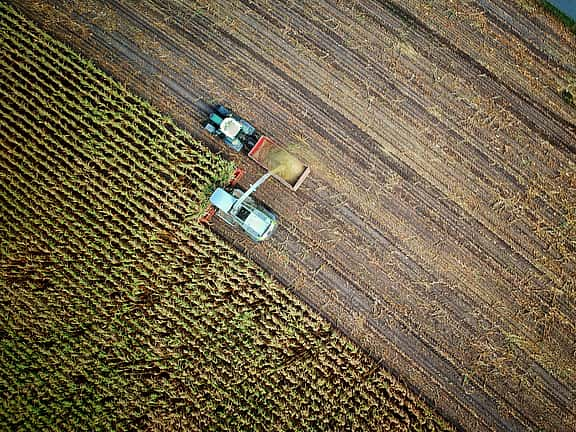Meanwhile, the impacts of extremes in weather, a growing population and shifts in employment patterns all represent major challenges to the future of this important sector.
Future speculation about the evolvement of agriculture is necessary to understand the way forward in the face of these issues.
Farms of the future need to be flexible, resilient and independent, with precision and robotic systems that will allow farms to be more profitable, efficient, safe, and environmentally friendly.
Making the most of innovative tech
Unprecedented technological developments are already aiding the Australian agricultural industry and are set to enhance it even further as we head into a challenging future.
As it becomes harder to recruit labourers, mechanical and automated means of planting, tending and harvesting crops or monitoring livestock have become more important than ever.
The scope of technology and the myriad of ways it can aid farmers is impressive and ever-expanding.
For example, in sheep farming, farmers can fit their animals with an electronic ear tag that gets read when they pass gates or watering points. When the sheep cross digital scales, the farmer can see which animals may be losing weight and need attention.
In arable farming, robots and automated machinery manage crops. In fruit farming, machinery can monitor trees, analyse individual pieces of fruit and automatically harvest it if it meets the required criteria.
Drones can monitor crop or livestock health with ease, giving the farmer a bird’s-eye view of the state of their assets.
The human touch is not lost, though. In all these examples, you still need people with agricultural knowledge to manage the technology and analyse data.
And farmers need not fear that investment in new technology is out of their reach financially. Leasing solutions represent the way forward, allowing farmers to benefit from the most cutting-edge tech without breaking the bank. With manageable monthly instalments, the cash keeps flowing while the crops and livestock keep growing!
Working smarter
While farmers in Australia are already efficient, they will need to up their game even further going into the future.
According to the United Nations, the world’s population is predicted to increase by 2 billion within the next 30 years, reaching 9.7 billion in 2050.
This is significant for Australia as around 72% of our country’s agricultural products are exported, making us an important supplier of food around the world.
Employing the technology described above is part of this. Other solutions include maximising the productivity of land that is already farmed, especially that close to cities where markets are situated, rather than wasting resources trying to transform land further out.
“Protected cropping” is another way to farm smarter. This involves growing crops all year round in glasshouses, using renewable energy sources such as solar and desalinated seawater. Because this method uses aquaculture — growing plants on water instead of in soil — pesticides are reduced too.
Keeping up with climate change
The frequency and severity of drought in Australia in recent years has reduced agricultural output.
And so new and more sustainable farming techniques to adapt to the changing climate are required to mitigate this loss.
A Financial Times report on changing farming practices in New South Wales encapsulates some of the changes being made.
For example, farmers have been experimenting with different strains of wheat, fava beans and chickpeas to find varieties that are more drought tolerant.
Technology comes into its own as digital probes constantly monitor the levels of moisture in the soil, while yield mapping allows farmers to identify the highest and lowest-yielding spots.
Farmers are sharing data to know which crop rotations work the best and are even planting non-profitable cover crops to protect the soil, which can be blown away in times of drought.
And overhead sprinkler systems allow farmers to grow the same or better yields with less water.
This is a snapshot of what’s going on all over Australia in a bid to adapt to the effects of climate change, now and in the future.
Adapting farming careers
With far-reaching changes required to enable Australian agriculture to move into the future, careers will need to flex too.
Agriculture is now demanding people skilled in IT, data management, electronics, engineering, business and marketing to effect these changing practices.
Opening up agriculture to a broad range of skills makes it an attractive career to the most skilled and specialist professionals.
It’s about presenting its true image as a dynamic, challenging sector so that it appeals to the very best graduates starting out in their careers. This is what will ensure agriculture’s longevity in the years to come.
Never staying still
Farming never stays still and is evolving at a rapid rate.
For anyone invested in this sector, innovative solutions are needed to secure a prosperous future.
So innovations like experimenting with hardier crops, changing the image of farming as a career and even leasing the latest technology all play their part in moving agriculture forward into a challenging future.
Want to know more about leasing solutions for the agriculture industry? At Grenke, we’re committed to providing the most cutting-edge answers to the challenges of industries like agriculture. Reach out to our team to understand what tailored and manageable leasing solutions could do for your farming business.






